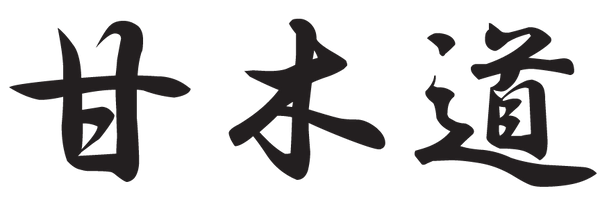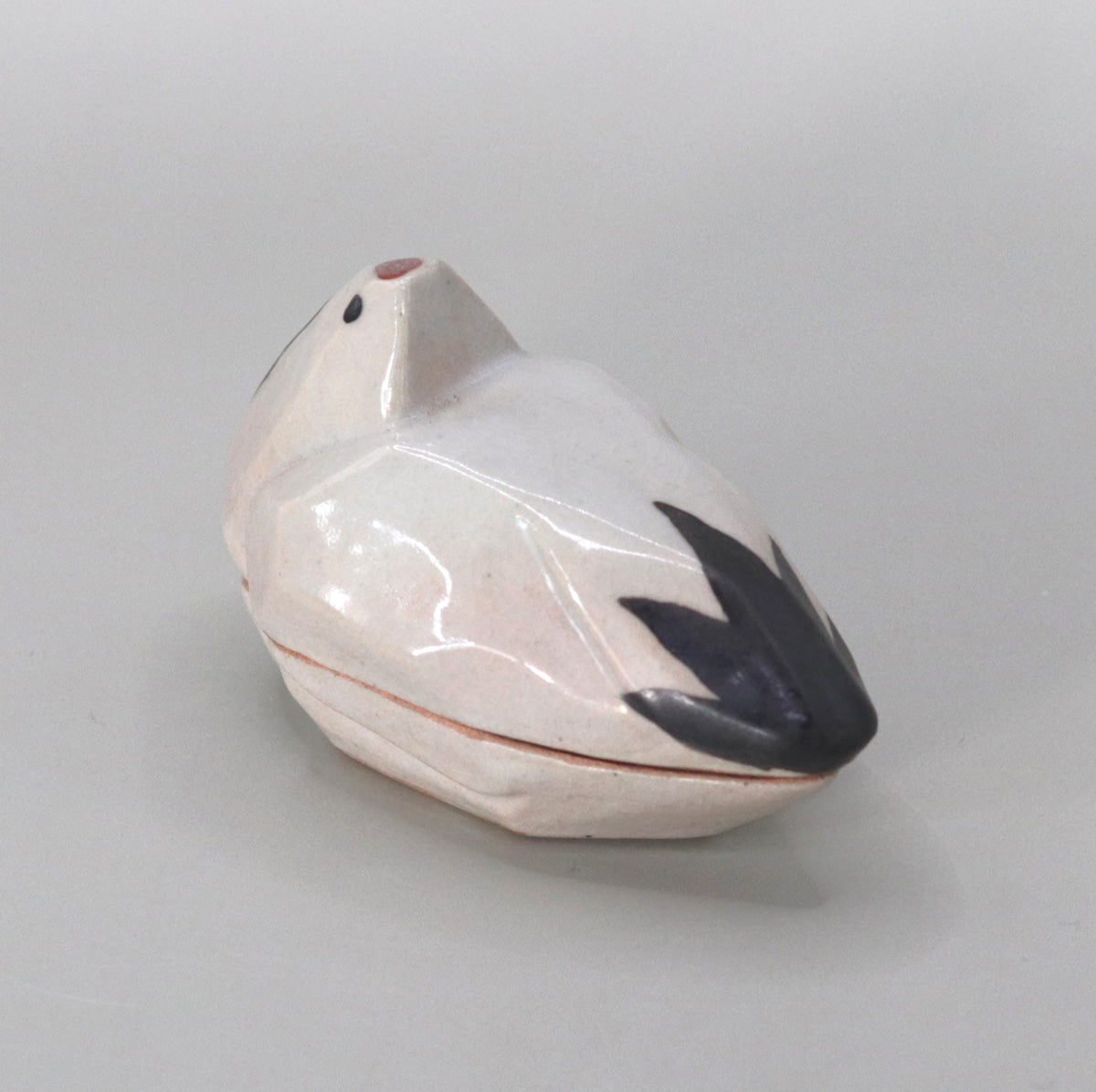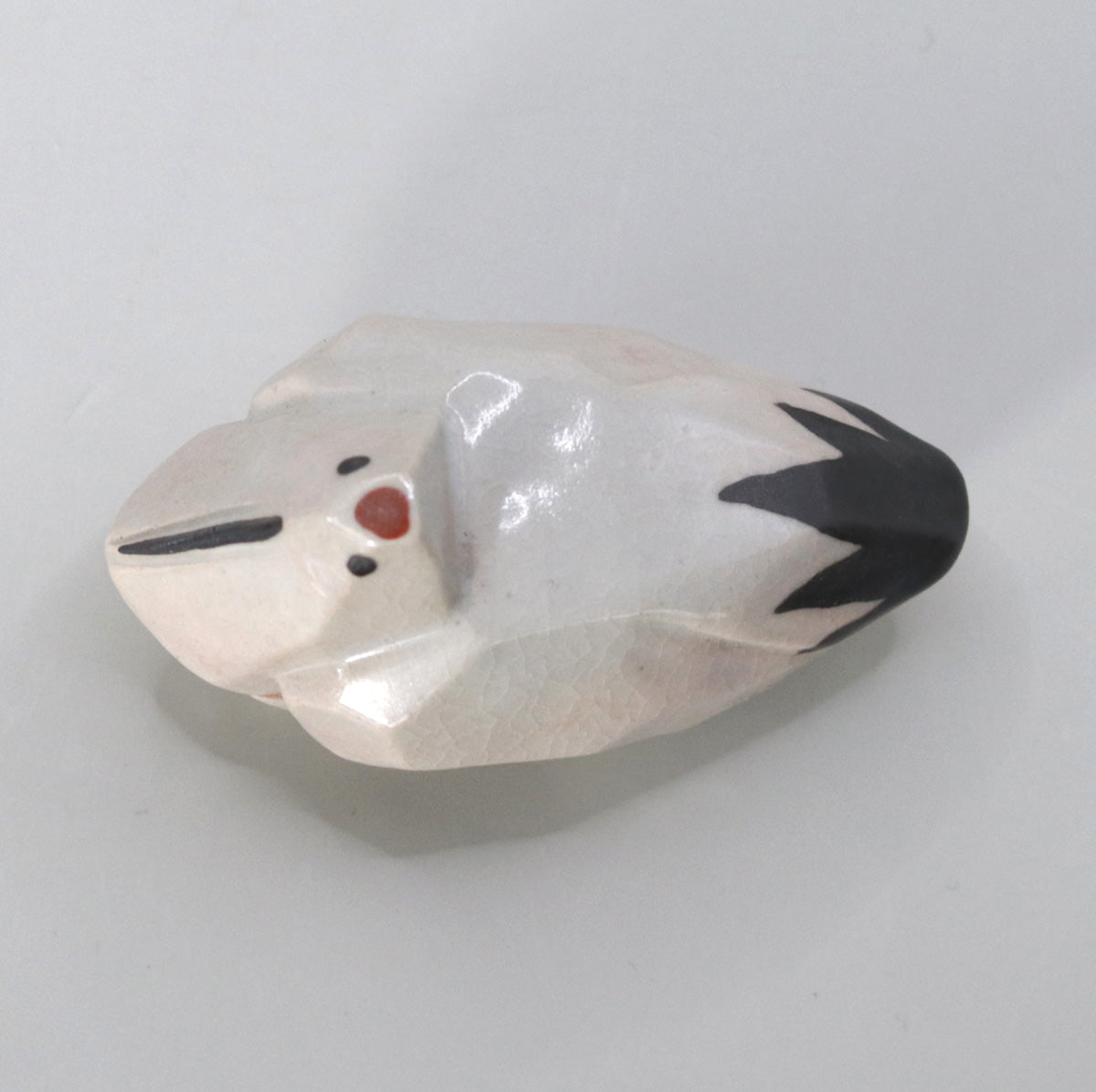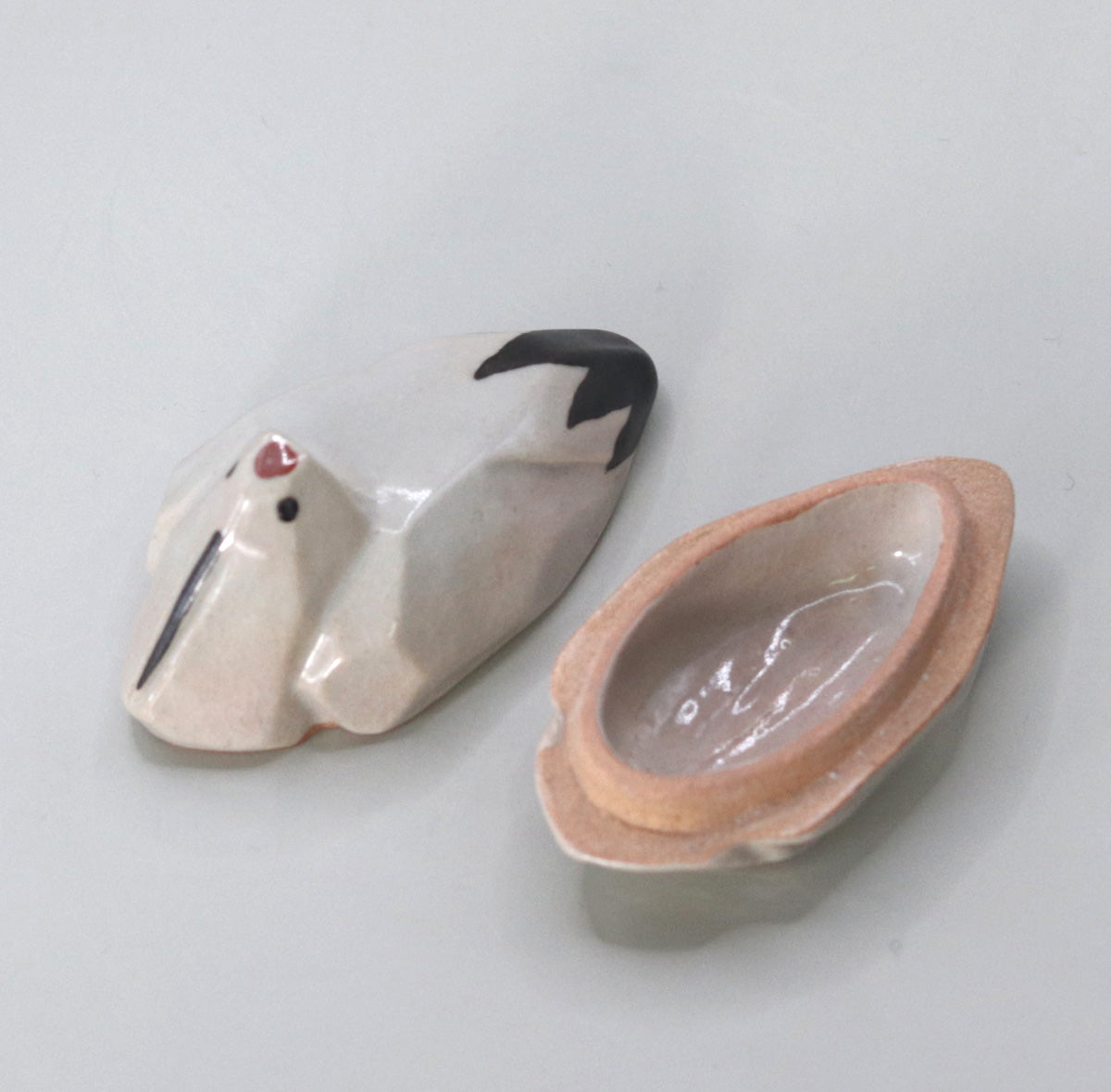Crane incense holder by Rakusai Onishi
Crane incense holder by Rakusai Onishi
Couldn't load pickup availability
Width: 7.2cm x 4.0cm Height: 4.5cm
This work by Onishi Rakusai is an incense holder with a crane motif, known as an auspicious bird. The angled, polyhedral shape and minimal brushstrokes are skillfully combined to create an abstract design that is both cute and elegant. Below, we will introduce the appeal of this work in detail from five perspectives.
1. Beauty of Form - Refinement of polyhedral form
Sculptural Form <br data-start="210" data-end="213">Sharp chamfers are applied from the body to the tip of the tail, and whenever light hits the surface, the surface reflects light in a delicate manner. This creates a sense of movement that makes you feel the flapping of a crane's wings, even though the figure is still.
Low center of gravity for stability <br data-start="318" data-end="321">The base is designed to be wide, making it a practical structure that is unlikely to tip over even if the lid is opened and closed repeatedly while preparing the incense charcoal.
The ridge from the neck to the beak <br data-start="387" data-end="390">The neck rises in a straight line, and a single ridge that connects naturally to the beak expresses the elegance of the crane while maintaining a balance between realism and abstraction.
2. Glaze and coloring: Serene white and symbolic color arrangement
The texture of the soft white glaze <br data-start="511" data-end="514">The glaze that envelops the body is a milky white color with a slight hint of pink, and the fine crazing caused by the reduction firing creates a subtle shadow effect.
The red crane on top of the head is a symbol of the crane, and a single spot of vermilion pigment is placed on it, with the surrounding area raised to emphasize the three-dimensionality and luster.
Ink drawing of the beak and tail feathers <br data-start="650" data-end="653">The beak, boldly drawn in iron-based black glaze, and the black brush marks on the tail feathers add a sharp tension to the overall serenity and serve to balance the center of gravity of the painting.
3. Technique: Hand-formed molding and overglaze firing
One-piece hand-twisted <br data-start="764" data-end="767">The body is hand-twisted into a block, then carved into a polyhedral shape. The carving marks are intentionally left to visualize the roughness of the material and the breath of the artist.
Twice bisque fired and clear glaze applied <br data-start="852" data-end="855">After molding, the piece is bisque fired twice to stabilize the glaze's water absorption before being covered with a clear glaze, giving the glaze surface a uniform luster.
Low-Temperature Painting <br data-start="927" data-end="930">The red and black paint is fired at 750-800℃ to ensure the freshness and durability of the colors. In particular, the beak is painted with a "kaeshi brush", which quickly returns the painting brush, creating sharp lines.
4. Functionality for tea ceremonies
Capacity and airtightness <br data-start="1047" data-end="1050">The inside is a shallow dish shape, making it easy to store fragrant wood or incense paste, and the fitting parts are precisely cut to fit together, maintaining airtightness to the point that the lid lightly sticks to it when turned.
A Wide Variety of Combinations <br data-start="1130" data-end="1133">The crane is a symbol of longevity and good fortune, and is suitable for a wide range of occasions, including the first tea ceremony of the New Year and celebrations for 60th and 77th birthdays, as well as moon-viewing in autumn and cherry blossom viewing in spring.
Easy to carry <br data-start="1212" data-end="1215">The chamfered structure makes it easy to grip with your fingers and allows for natural positioning, making it suitable for complex tea ceremonies that involve the use of a lid rest and incense holder in tandem.
5. Cultural and symbolic significance
Cranes are sacred birds that are written about in the Kojiki and Manyoshu, and were also popular motifs in the screen paintings of Heian aristocrats and Noh costumes. In particular, the red-crowned crane has been regarded as a sacred bird of the heavens, guiding the way through the clouds as a harbinger. This work expresses the sublimity of the crane to an extremely abstract level,
Combining both classicism (the traditional auspicious bird) and modernity (a minimalist form), it symbolizes "continuation" and "renewal" in the tea ceremony. Though small, the rhythm of light created by the ridges of the polyhedron, the tension created by the subtle coloring of the red crane and ink painting, and the tranquil white that envelops the incense - Onishi Rakusai's crane incense container is an exceptional piece that brings a pure atmosphere to the tea room from the moment it is placed in the palm of your hand. When placed at a tea ceremony, guests will be able to enjoy the auspicious bird and the wafting fragrance, and a moment of sharing good fortune.
Share


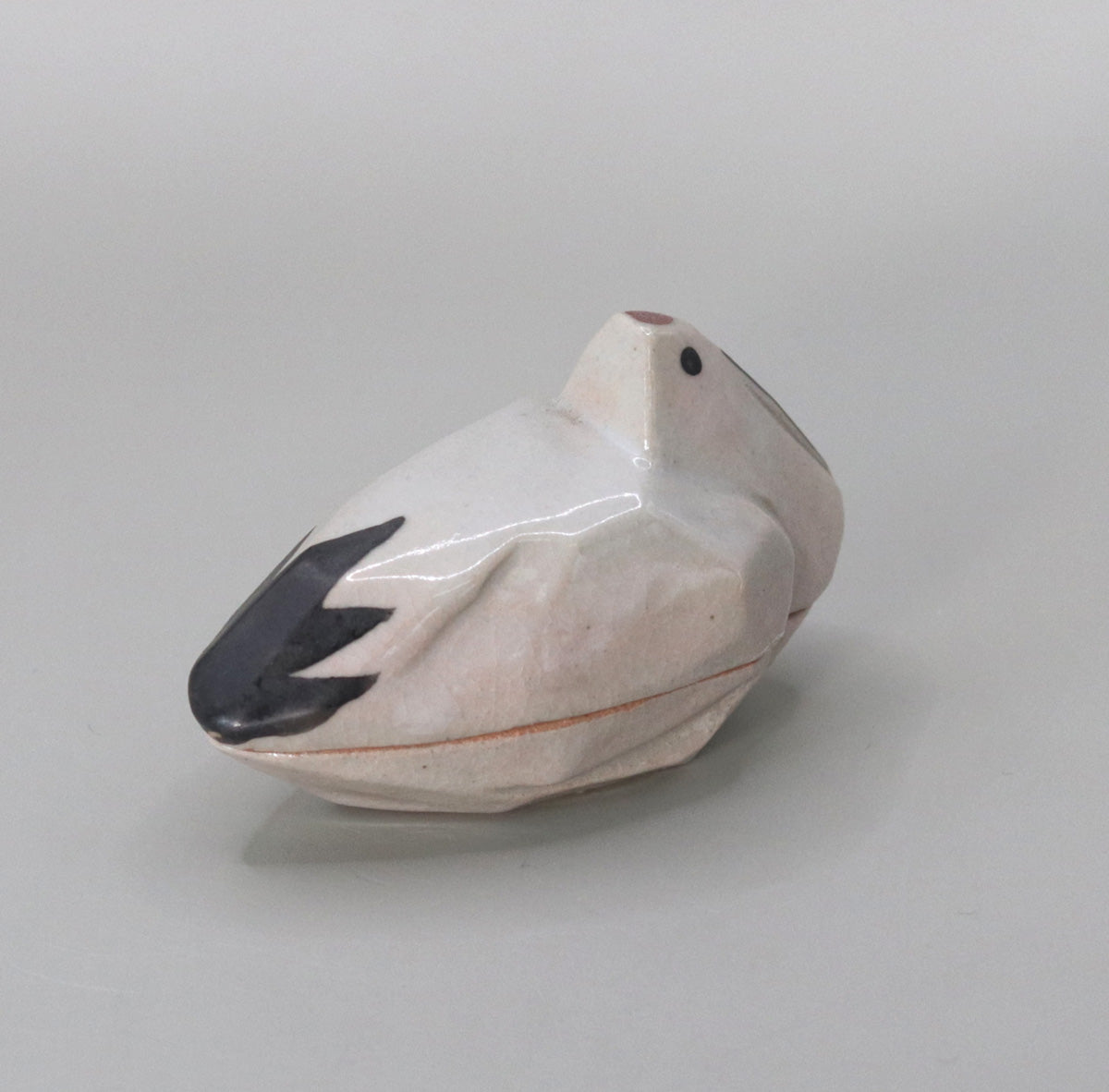
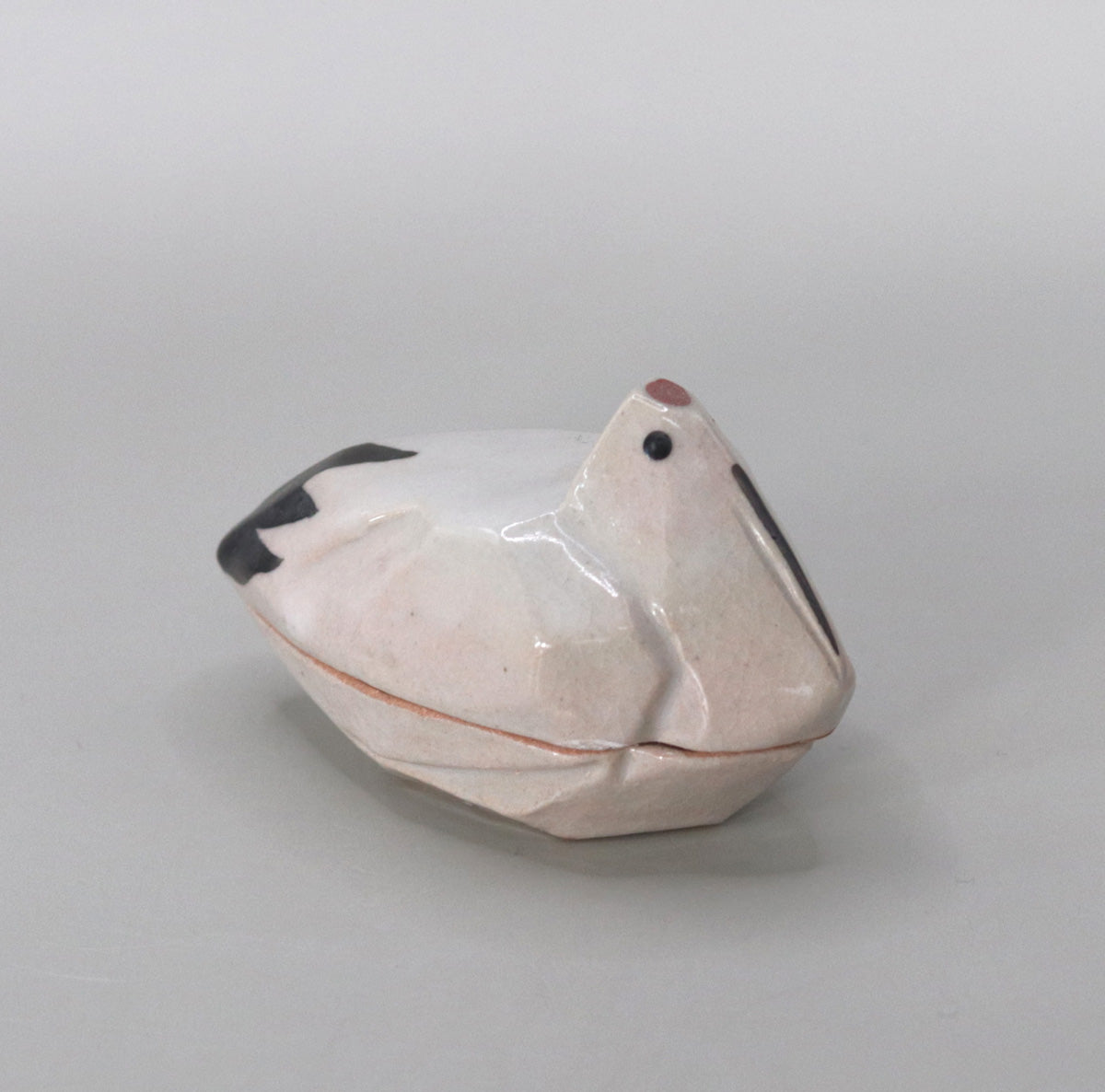
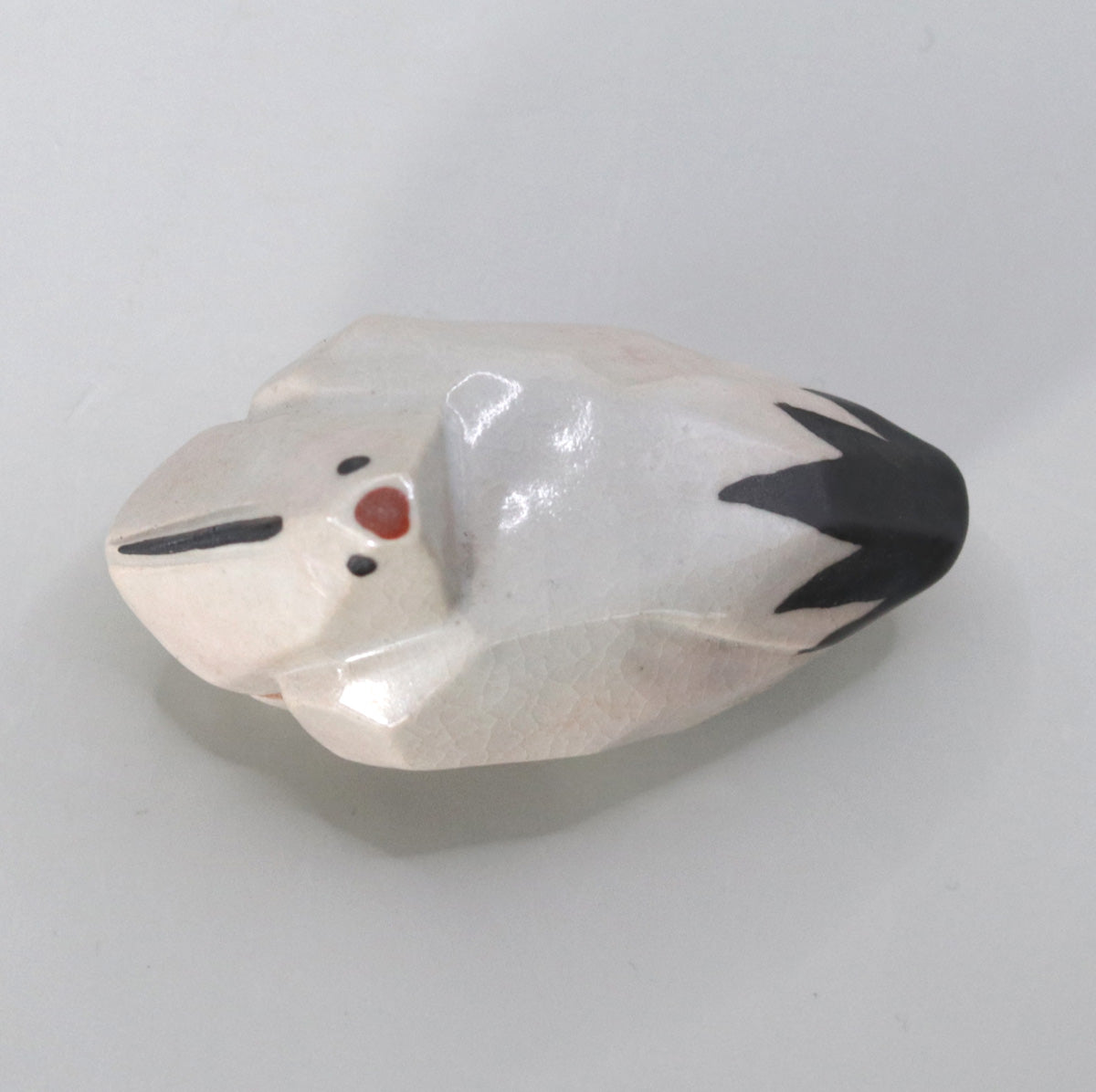
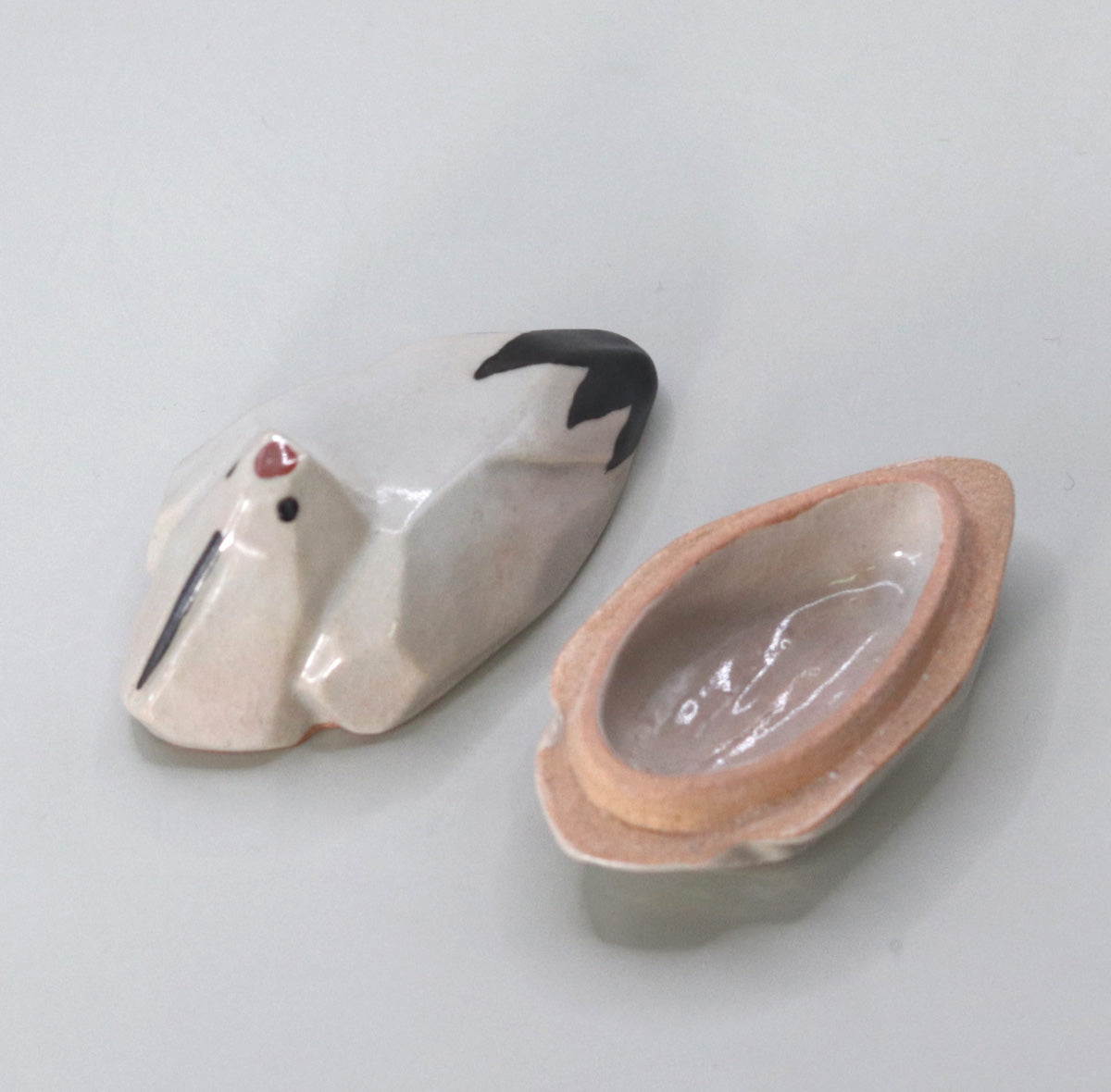
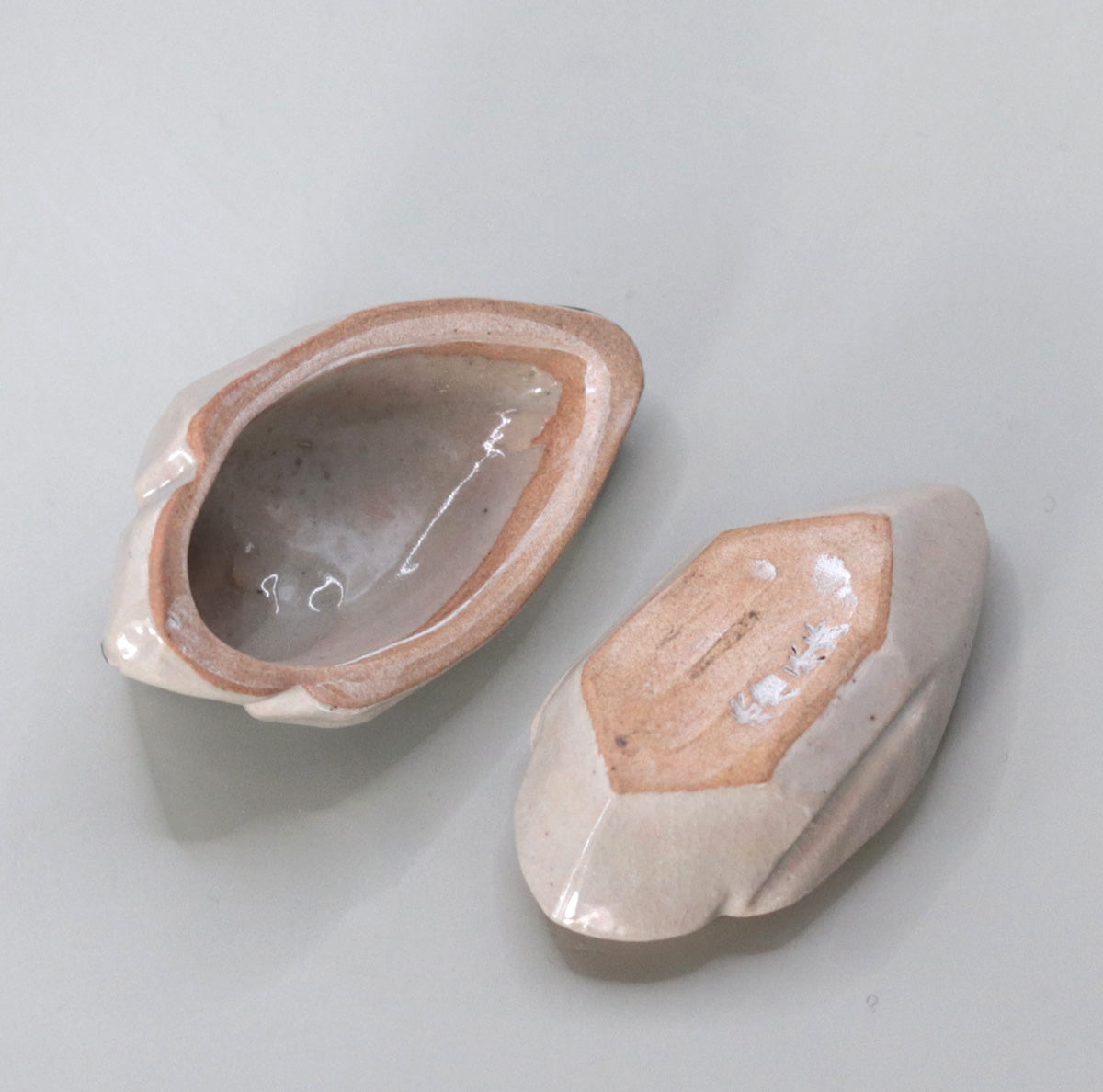
Multi-Column
-
[I will send it to you quickly and carefully]
We carefully package each product in a way that suits it best.
Also, delivery times vary depending on the piece (vessel, etc.).
Items that already come with a box will be shipped within 1-3 days of the order date.
For items that require a box to be made after your order, it will take approximately 30 days for production to be completed and then shipped.
In either case, once we have confirmed your order, we will contact you by email to inform you of the delivery date.
-
[Requests when purchasing pottery]
Even products that look the same may differ slightly in color, shape, size, etc.
The way the glaze is used, the power of the kiln, the firing method, the season, and the humidity also affect the appearance of the pottery.
Please understand the individuality of each piece of pottery and enjoy the unique warmth of handmade.
